
The history of Madagascar is distinguished clearly by the early isolation of the landmass from the ancient supercontinent of Pangaea, containing amongst others the African continent and the Indian subcontinent, and by the island's late colonization by human settlers from the Sunda islands and from East Africa. These two factors facilitated the evolution and survival of thousands of endemic plant and animal species, some of which have gone extinct or are currently threatened with extinction. Trade in the Indian Ocean at the time of first colonization of Madagascar was dominated by Indonesian ships, probably of Borobudur ship and K'un-lun po types.

Radama I "the Great" (1793–1828) was the first Malagasy sovereign to be recognized as King of Madagascar (1810–1828) by a European state. He came to power at the age of 18 following the death of his father, King Andrianampoinimerina. Under Radama's rule and at his invitation, the first Europeans entered his central highland Kingdom of Imerina and its capital at Antananarivo. Radama encouraged these London Missionary Society envoys to establish schools to teach tradecraft and literacy to nobles and potential military and civil service recruits; they also introduced Christianity and taught literacy using the translated Bible. A wide range of political and social reforms were enacted under his rule, including an end to the international slave trade, which had historically been a key source of wealth and armaments for the Merina monarchy. Through aggressive military campaigns he successfully united two-thirds of the island under his rule. Abuse of alcohol weakened his health and he died prematurely at age 35. He was succeeded by his highest-ranking wife, Ranavalona I.
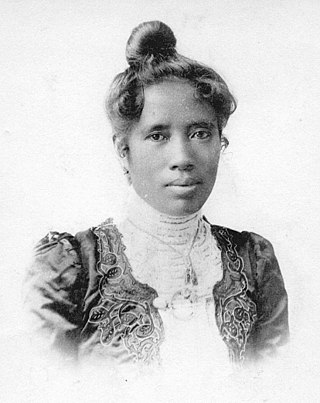
Ranavalona III was the last sovereign of the Kingdom of Madagascar. She ruled from 30 July 1883 to 28 February 1897 in a reign marked by ultimately futile efforts to resist the colonial designs of the government of France. As a young woman, she was selected from among several Andriana qualified to succeed Queen Ranavalona II upon her death. Like both preceding queens, Ranavalona entered a political marriage with a member of the Hova elite named Rainilaiarivony, who largely oversaw the day-to-day governance of the kingdom and managed its foreign affairs in his role as prime minister. Ranavalona tried to stave off colonization by strengthening trade and diplomatic relations with foreign powers throughout her reign, but French attacks on coastal port towns and an assault on the capital city of Antananarivo led to the capture of the royal palace in 1895, ending the sovereignty and political autonomy of the centuries-old kingdom.

The Merina people are the largest ethnic group in Madagascar. They are the "highlander" Malagasy ethnic group of the African island and one of the country's eighteen official ethnic groups. Their origins are mixed, predominantly with Austronesians arriving before the 5th century AD, then many centuries later with Arabs, Africans and other ethnic groups. They speak the Merina dialect of the official Malagasy language of Madagascar.

The Malagasy Uprising was a Malagasy nationalist rebellion against French colonial rule in Madagascar, lasting from March 1947 to February 1949. Starting in late 1945, Madagascar's first French National Assembly deputies, Joseph Raseta, Joseph Ravoahangy and Jacques Rabemananjara of the Mouvement démocratique de la rénovation malgache (MDRM) political party, led an effort to achieve independence for Madagascar through legal channels. The failure of this initiative and the harsh response it drew from the Socialist Ramadier administration radicalized elements of the Malagasy population, including leaders of several militant nationalist secret societies.
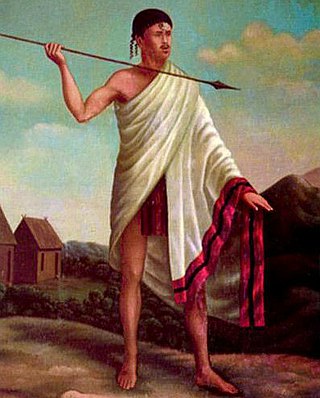
Andrianampoinimerina (1745–1810) ruled the Kingdom of Imerina on Madagascar from 1787 until his death. His reign was marked by the reunification of Imerina following 77 years of civil war, and the subsequent expansion of his kingdom into neighboring territories, thereby initiating the unification of Madagascar under Merina rule. Andrianampoinimerina is a cultural hero and holds near mythic status among the Merina people, and is considered one of the greatest military and political leaders in the history of Madagascar.

Rainilaiarivony was a Malagasy politician who served as the prime minister of Madagascar from 1864 to 1895, succeeding his older brother Rainivoninahitriniony, who had held the post for thirteen years. His career mirrored that of his father Rainiharo, a renowned military man who became prime minister during the reign of Queen Ranavalona I.

The Franco-Hova Wars, also known as the Franco-Malagasy Wars were two French military interventions in Madagascar between 1883 and 1896 that overthrew the ruling monarchy of the Merina Kingdom, and resulted in Madagascar becoming a French colony. The term "Hova" referred to a social class within the Merina class structure.

Andriana was both the noble class and a title of nobility in Madagascar. Historically, many Malagasy ethnic groups lived in highly stratified caste-based social orders in which the andriana were the highest strata. They were above the Hova and Andevo (slaves). The Andriana and the Hova were a part of Fotsy, while the Andevo were Mainty in local terminology.

The Merina Kingdom, or Kingdom of Madagascar, officially the Kingdom of Imerina, was a pre-colonial state off the coast of Southeast Africa that, by the 18th century, dominated most of what is now Madagascar. It spread outward from Imerina, the Central Highlands region primarily inhabited by the Merina ethnic group with a spiritual capital at Ambohimanga and a political capital 24 km (15 mi) west at Antananarivo, currently the seat of government for the modern state of Madagascar. The Merina kings and queens who ruled over greater Madagascar in the 19th century were the descendants of a long line of hereditary Merina royalty originating with Andriamanelo, who is traditionally credited with founding Imerina in 1540.
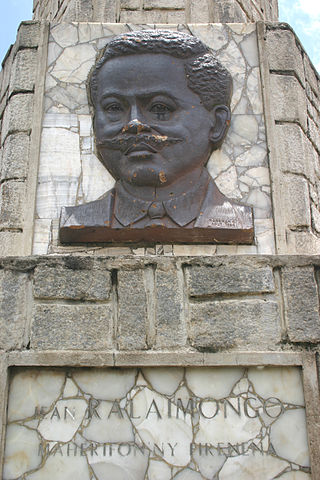
Jean Ralaimongo (1885–1944) was a teacher who came to prominence after campaigning to get the French government to give citizenship to the people of Madagascar. Ralaimongo wanted Madagascar to become a French département and therefore part of France. He came to prominence after 3,000 demonstrated following speeches in a cinema in 1929.
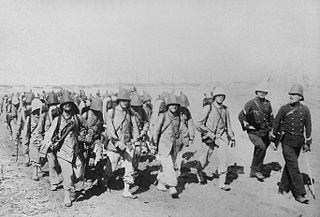
The Second Madagascar expedition was a French military intervention which took place in 1894–95, sealing the conquest of the Merina Kingdom on the island of Madagascar by France. It was the last phase of the Franco-Hova War and followed the First Madagascar expedition of 1883–85.
The Menalamba rebellion was an uprising in Madagascar by the Sakalava people that emerged in central Madagascar in response to the French capture of the royal palace in the capital city of Antananarivo in September 1895. it spread rapidly in 1896, threatening the capital, but French forces were successful in securing the surrender of many rebel groups in 1897. Elements of the rebellion continued sporadically until 1903.
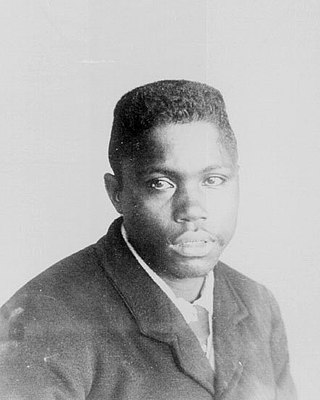
The Hova, or free commoners, were one of the three principal historical castes in the Merina Kingdom of Madagascar, alongside the Andriana (nobles) and Andevo (slaves). The term hova originally applied to all members of a Malagasy clan that migrated into the central highlands from the southeast coast of the island around the 15th century and absorbed the existing population of Vazimba. Andriamanelo (1540–1575) consolidated the power of the Hova when he united many of the Hova chiefdoms around Antananarivo under his rule. The term Hova remained in use through the 20th century, though some foreigners transliterated that word to be Ankova, and increasingly used since the 19th century.

The Colony of Madagascar and Dependencies was a French colony off the coast of Southeast Africa between 1897 and 1958 in what is now Madagascar. The colony was formerly a protectorate of France known as Malagasy Protectorate. The protectorate became a colony, following Queen Ranavalona III's exile to island of Réunion.
The Democratic Movement for Malagasy Rejuvenation was the first political party formed in Madagascar, following the Brazzaville Conference of 1944 during which General Charles de Gaulle announced all colonies were to become French overseas territories entitled to representation in the French National Assembly.
Ny Avana Ramanantoanina (1891–1940) is among the most celebrated literary artists of Madagascar. He is principally renowned for his poetry, but also wrote stories and plays. He wrote during the colonial period and is considered to have been the first Malagasy writer to weave political messages into his work. He wrote primarily in the Malagasy language. A contemporary of Jean-Joseph Rabearivelo, who is commonly cited as the first African poet to write according to Western conventions, Ramanantoanina was highly critical of the French colonial authority. He was a member of the secret nationalist organization Vy Vato Sakelika, and was exiled to Mayotte in the Comoros when the organization was banned by the French colonial authority in 1917. His writings were consequently banned and were not reprinted until the 1980s in Madagascar. As a result, his writings are relatively less well known in international literary circles than those of Rabearivelo.
The literature of Madagascar encompasses the oral and written literary arts of the Malagasy people.

The Parti des déshérités de Madagascar was a political party active in Madagascar from June 1946 into the First Republic (1960–1972). It was formed in reaction to the establishment and rapid political success of the Mouvement démocratique de la rénovation malgache (MDRM) political party, formed by Merina elites on a platform of independence from France. While nationalism - and therefore the MDRM - had widespread support from all ethnic communities, PADESM championed the empowerment and equitable government of coastal peoples, who had historically been subjugated by the Merina and feared the MDRM could ensure their return to political dominance upon independence. They actively recruited and campaigned along ethnic lines, initially including coastal peoples and the descendants of Merina slaves, but eventually excluding the latter entirely. The formation and political success of PADESM was actively fostered by the French colonial administration, which manipulated election results in favor of the coastal party.

Binao (1867–1927) was a queen of the Sakalava people of Madagascar between 1881–1927. She was the granddaughter of King Andriantsoly of the Boina Kingdom, and acceded in 1881 to the throne of the Bemihisatra group of the Sakalava following the death of her mother, Safy Mozongo. She controlled a relatively small territory on the north-western coast of Madagascar consisting of the island of Nosy Be and a stretch of the mainland coast opposite. During the early years of her reign she faced the challenge posed by the ambitions of the mainland's dominant power, the Merina Kingdom.